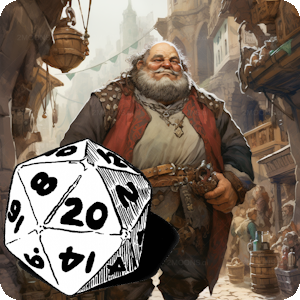Dungeons & Dragons (D&D) is a captivating tabletop role-playing game that combines storytelling, strategy, and imagination. Whether you’re a complete newcomer or a curious adventurer, this tutorial will guide you through the basic steps of playing D&D and help you embark on epic quests in fantastical worlds.

Step 1: Gather Your Supplies
Before diving into the world of D&D, gather the essential supplies:
- D&D Rulebooks: Obtain a Player’s Handbook (PHB) to understand the game rules. Dungeon Master’s Guide (DMG) and Monster Manual (MM) are helpful for the Dungeon Master (DM).
- Dice Set: You’ll need a set of seven polyhedral dice, including a 20-sided die (d20), to determine outcomes in the game.
- Character Sheet: Each player needs a character sheet to record details about their character, such as race, class, and abilities.
- Pencils and Erasers: Prepare for note-taking and updating character sheets during the game.
Step 2: Create Your Character

- Choose a Race and Class: Races (e.g., elf, dwarf) and classes (e.g., wizard, rogue) define your character’s abilities. Consult the PHB for details and choose what resonates with you.
- Assign Ability Scores: Roll dice or use a predetermined method to determine your character’s strength, dexterity, constitution, intelligence, wisdom, and charisma.
- Select Background: Choose a background that provides skills, tools, and a roleplaying foundation for your character.
- Fill Out Details: Name your character, determine alignment (their moral and ethical compass), and establish a brief backstory.
Step 3: Understand the Basics of Gameplay
- Learn the Core Mechanics: D&D is based on a core mechanic of rolling a twenty-sided die (d20) to determine success or failure in various actions.
- Turn Structure: Gameplay is divided into turns. Each turn, a player can move, take an action (e.g., attack, cast a spell), and possibly use a bonus action or reaction.
- Combat: Combat involves rolling initiative, taking turns in order, and engaging in actions like attacking, casting spells, and using abilities.
Step 4: Join or Form a Party
- Gather Fellow Adventurers: D&D is best enjoyed with a group. Recruit friends interested in playing or find local game shops or online communities to join.
- Choose a Dungeon Master: One player takes on the role of Dungeon Master, guiding the story, controlling non-player characters, and managing the world.

Step 5: Begin Your Adventure
- Dungeon Master Sets the Scene: The DM describes the world, sets the scene, and introduces challenges.
- Roleplay and Interact: Engage with the world, other players, and non-player characters through roleplaying. Make decisions that shape the narrative.
- Follow the Story: Navigate through the campaign, face challenges, solve puzzles, and interact with the unfolding story.
Step 6: Embrace Creativity and Flexibility
- Think Outside the Box: D&D is about creativity. Don’t be afraid to think outside the box when faced with challenges.
- Collaborate with Your Party: Teamwork is key. Collaborate with your fellow adventurers to overcome obstacles and share in the story.

Step 7: Enjoy the Journey
Dungeons & Dragons is a game of shared storytelling and collective imagination. Embrace the journey, celebrate victories, learn from defeats, and most importantly, have fun!
Remember, the rules are a guide, and the most important aspect is creating a memorable and enjoyable experience for everyone at the table. May your dice rolls be ever in your favor, and may your adventures be legendary!
